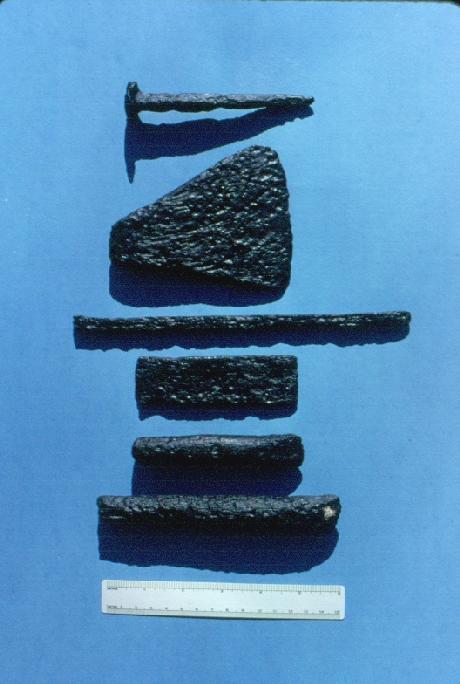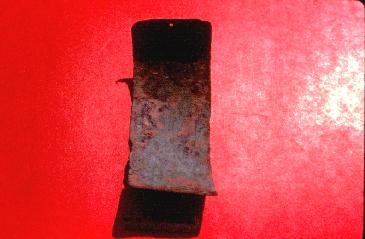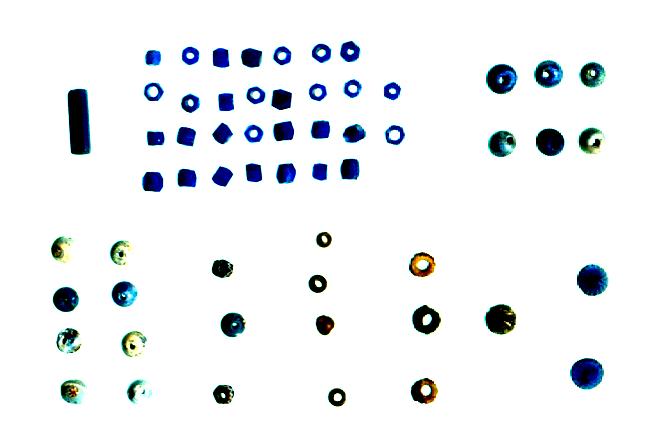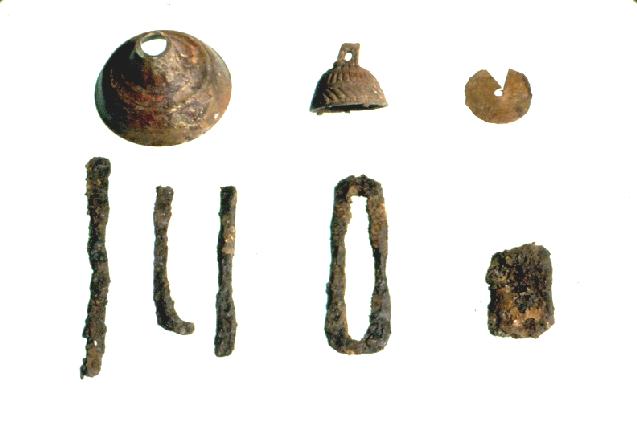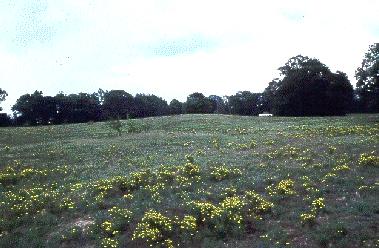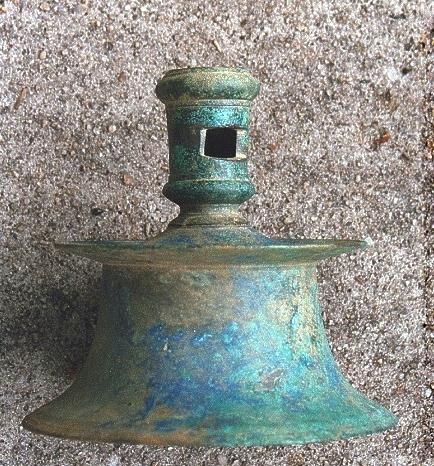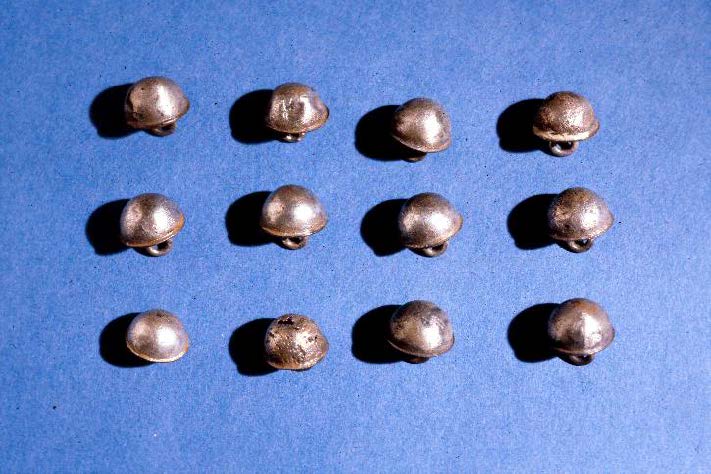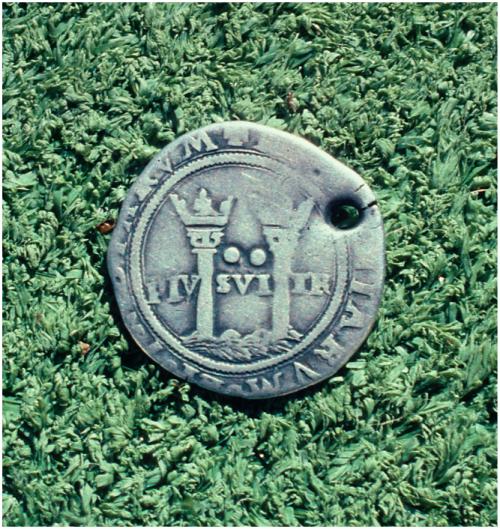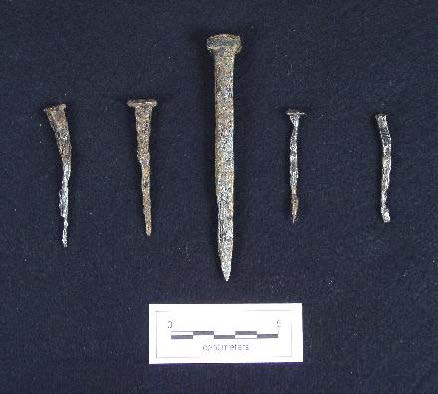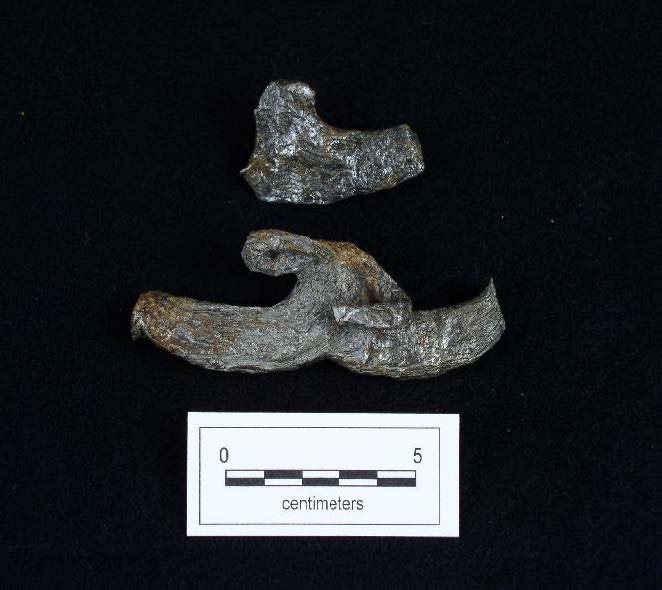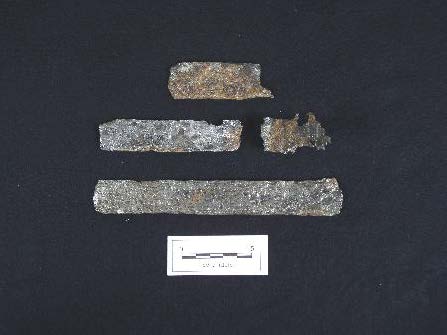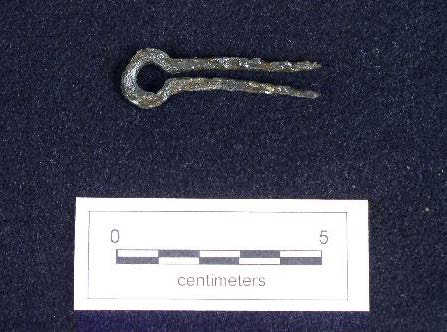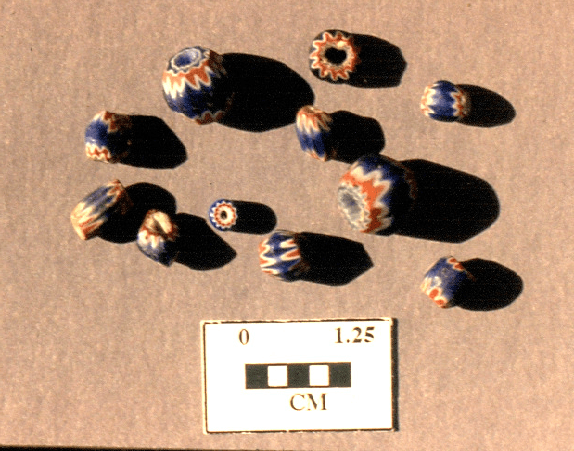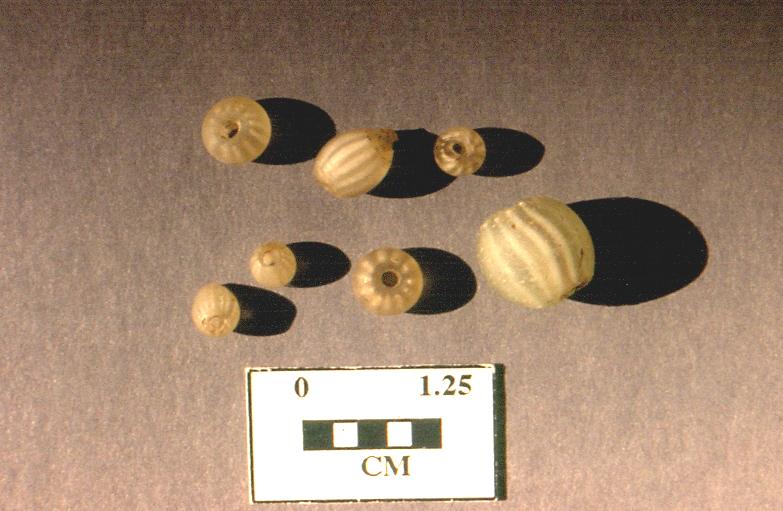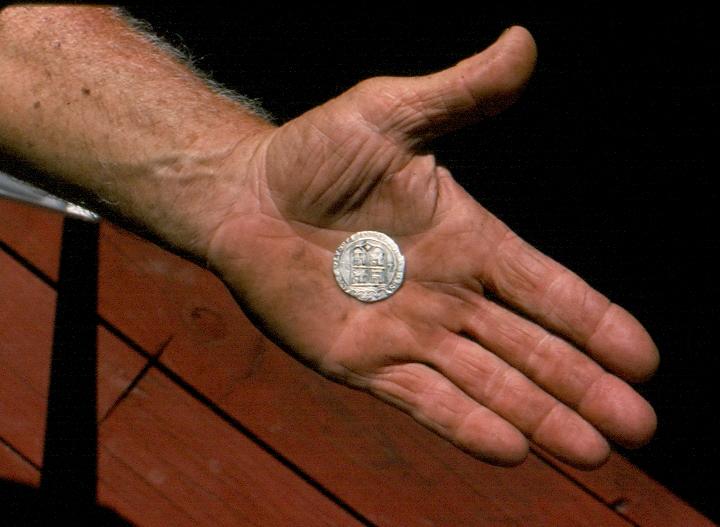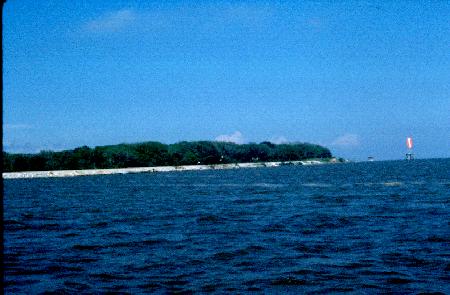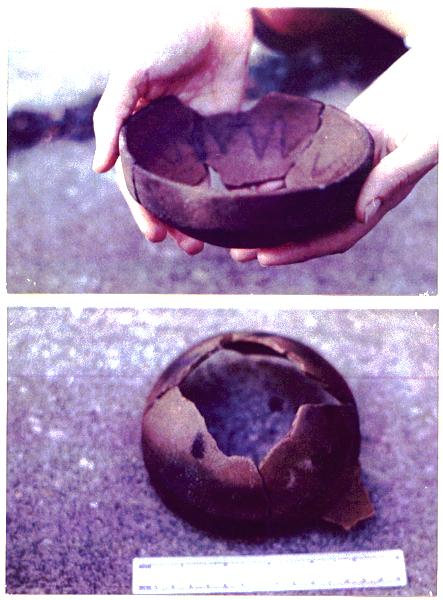Artifactual Remains of the Spanish Conquistadors
Alabama and NW Florida
by Caleb Curren
Contact Archeology Ink
Two Spanish expeditions came deep into the interior of the current Southeastern United States during the 1500s; Hernando de Soto in 1539 and Tristan de Luna in 1559. They were looking for precious metals as well as geographical data for later land grants from the Spanish Crown. This journal article addresses some of the material items they left behind during their explorations.
We don’t know precisely where they went. Researchers are attempting to refine that model. In the interim, these artifactual images are submitted for researchers and interested individuals. The artifacts were left by the Spaniards in their travels through Alabama and NW Florida. Hopefully, the data will lead to developing hypotheses and ultimately lead to the answer to the riddle of where the Spaniards traveled and how the Native Peoples lived their lives at the time when these strangers from across the sea entered their world.
Curren, Caleb
- Article
-
Two Spanish expeditions came deep into the interior of the current Southeastern United States during the 1500s; Hernando de Soto in 1539 and Tristan de Luna in 1559. They were looking for precious metals as well as geographical data for later land grants from the Spanish Crown. This journal article addresses some of the material items they left behind during their explorations.
We don’t know precisely where they went. Researchers are attempting to refine that model. In the interim, these artifactual images are submitted for researchers and interested individuals. The artifacts were left by the Spaniards in their travels through Alabama and NW Florida. Hopefully, the data will lead to developing hypotheses and ultimately lead to the answer to the riddle of where the Spaniards traveled and how the Native Peoples lived their lives at the time when these strangers from across the sea entered their world.
- References
-
Arnold, J. Barto Arnold III and Robert Weddle1978 The Nautical Archeology of Padre Island, the Spanish Shipwrecks of 1554. Academic Press. New York, San Francisco, and London.Brain, Jeffrey P.1979 Tunica Treasure. The Peabody Museum of Archaeology and Ethnology, Harvard University, and the Peabody Museum of Salem.Clark, Charles2001 Personal Communications.
Curren, Caleb
1987 The Route of the Soto Army through Alabama. Alabama de Soto Commission Working Papers #3. The University of Alabama State Museum of Natural History.1994 The Search for Santa Maria: A 1559 Spanish Colony on the Northern Florida Coast.Pensacola Archeology Lab.2010 1Ba196: Luna on Mobile Bay? Archeology Ink, An Online Journal.2012 An Exploration for the Oldest European Colony on the American Gulf Coast. Archeology Ink, An Online Journal.Curren, Caleb, Keith J. Little, and Harry O. Holstein1989 Aboriginal Societies Encountered by the Tristan de Luna Expedition. The Florida Anthropologist 42(4):381-395.Deagan, Kathleen1987 Artifacts of the Spanish Colonies of Florida and the Caribbean, 1500-1800. Smithsonian Institution Press. Washington D.C.DePratter, Chester and Marvin Smith1982 Sixteenth Century European Trade in the Southeastern United States: Evidence from the Juan Pardo Expeditions (1566-1588). in Spanish Colonial FrontierResearch, edited by H. Dobyns. Albuquerque Center for Anthropological Studies. Goggin, John1968 Spanish Majolica in the New World. Yale University Publications in Anthropology 72. Yale University Press. New Haven.Little, Keith J.2008 European Artifact Chronology and Impacts of Spanish Contacts in the Sixteenth-Century Coosa Valley. A Dissertation. University of Alabama.Little, Keith J. and Caleb Curren1990 Conquest Archaeology of Alabama. in Columbian Consequences Vol. 2, edited by David Hurst Thomas. Smithsonian Institution. Washington D.C.Moore, Clarence B.1899 Certain Aboriginal Remains of the Alabama River. Journal of the Academy of Natural Sciences of Philadelphia 11(4):289-347.Smith, Marvin T. and Mary Elizabeth Good1982 Early Sixteenth Century Glass Beads in the Spanish Colonial Trade. Cottonlandia Museum Publications, Greenwood, Mississippi.South, Stanley, Russell D. Skowronek, and Richard E. Johnson1988 Spanish Artifacts from Santa Elena. Anthropological Studies 7. South Carolina Institute of Archaeology and Anthropology. The University of South Carolina.Stowe, Noel R., Richard S. Fuller, Amy Snow, and Jennie Trimble1982 A Preliminary Report of the Pine Log Creek Site (1Ba462). The University of South Alabama Archaeological Research Laboratory.Thomas, David Hurst2011 St. Catherines, An Island in Time. University of Georgia Press. - Download PDF Version
Site 1Ce308: (upper Coosa River) Cherokee County, Alabama
The site was found by local people. European artifacts were found at the site. They are Spanish in origin and date to the 1500s.
(photos, Caleb Curren)
refs: Little, Keith J., and Caleb Curren, 1981, “Site 1Ce308: A Protohistoric Site on the Upper Coosa River in Alabama.”
Journal of Alabama Archaeology 27.
Little, Keith J., 2010, “A Dissertation of the Spanish in the South.”
At least sixteen spherical blue glass beads and one faceted chevron bead were also found at the site.
The Charlotte Thompson Site
Montgomery County, Alabama
The site was first reported by C.B. Moore in the early 20th century. The site has since been destroyed by gravel pit operations. There was at least one mound at the site. European artifacts were found at the site. They are of Spanish origin dating to the 1500s. (Smithsonian Institution photos)
refs: 1899, Moore, Clarence B., “Certain Aboriginal Remains of the Alabama River.” Journal of the Academy of Natural Sciences of Philadelphia 11.
1987, Curren, Caleb, “The Route of the Soto Army Through Alabama.” Alabama De Soto Commission Working Paper #3.
Durant Bend Site (1Ds1)
This site is located on the Alabama River. An important Spanish artifact from the 1500s was found on the site. It is a capstan style candlestick made of brass and likely left on the site by the Soto or Luna expedition.
refs: personal communication, Charles Clark, 2005; Brannon, Peter, 1948, “Urn burial, an opinion.” Journal of the Alabama Academy of Science 20.; Moore, C.B., 1899, “Certain aboriginal remains of the Alabama River.” Journal of the Academy of Natural Sciences of Philadelphia 11(4): 289-347.;
Sheldon, Craig T., 1974, “The Mississippian– Historic transition in central Alabama. “ PhD. Dissertation, University of Oregon.
University Microfilms, Ann Arbor.; Nance, C. Roger, 1976, “The Archaeological Sequence at Durant Bend, Dallas County, Alabama. “Alabama Archaeological Society, Special Publication 2.; Curren, Caleb, 1984, “The Protohistoric Period in Central Alabama.” Alabama-Tombigbee Regional Commission. Curren, Caleb and Steve Newby, 2001, “A Sixteenth Century Candlestick from the Alabama River Drainage.”
Archeology Ink On-Line Journal.
1Ba1 Site: Perdido Bay
The site was first reported by C.B. Moore in the early 20th century. European artifacts were found at the site. They are of Spanish origin dating to the 1500s. (photos Smithsonian Ins.) (refs: Curren 2009, Archeology Ink On-Line Journal.
Spanish 2 Reales silver coin found by C.B. Moore at 1Ba1. It dates from the mid- 1500s and is known as a Charles and Johana coin.
The provinces of Leon and Castile are prominent on the obverse face and the pillars of Hercules on reverse side
Spanish artifacts from 1Ba1, Perdido Bay, Alabama top; silver buttons, bottom; faceted chevron beads. (photos Smithsonian Institution and State of Florida)
Pine Log Creek Site (1Ba462)
Baldwin County, Alabama
The site was first found by vandals. Archeologists recovered many of the Native and European artifacts found in Native burials at the site. They are of Spanish origin dating to the 1500s. This is one of the most important contact sites in all of the Southeast. (photos Caleb Curren; access courtesy N.R. Stowe) (refs: Stowe, Noel R., Richard Fuller, Amy Snow, and Jennie Trimble, 1982, “A Preliminary Report on the Pine Log Creek site (1Ba462).” University of South Alabama Archaeology Lab. Curren, Caleb, 1987, “The Route of the Soto Army Through Alabama.” Alabama DeSoto Commission Working Paper #3. Little, Keith J., and Caleb Curren, 1990, Conquest Archaeology of Alabama (in) Columbian Consequences Vol. 2, edited by David Hurst Thomas. Brain, Jeffrey P., 1985 Introduction to “Final Report of the United States De Soto Expedition Commission by John Swanton.)
Array of iron objects: horseshoe, axe, knives, gun barrel, chisel, spear, bridle bit, spikes and more.
Spanish glass trade beads, Pine Log Creek Site (1Ba462) blue glass beads, faceted chevron beads, indigenous shell bead (photos Caleb Curren)
Jewitt Landing Site (1Ck55)
Clarke County, Alabama
A Native urn burial was found eroding from the river bank by local people. It contained a silver 2-reale Spanish coin dating from the mid-1500s. It clearly shows the depiction of the Leon and Castle Provinces of the time as well as the Pillars of Hercules (the mouth of the Mediterrean Sea). It was likely left by the Tristan de Luna expedition. The hole was drilled by the Natives for suspension as an amulet.
(photos Caleb Curren)
refs: Curren, Caleb, 1992, “Archeology in the Mauvila Chiefdom.” Mobile Historic Development Commission.; Personal communication, Louis Finlay 1983; Finlay, Louis M. Jr., 1991, “The Syphrit Coin.” Clarke County Historical Society Quarterly 16.; Fuller, Richard S., Diane E. Silvia, and N.R. Stowe, 1984, “The Forks Project: An Investigation of the the Late Prehistoric-Early Historic Transition in the Alabama-Tombigbee Confluence Basin.” Report to the Alabama Historical Commission from the University of Alabama.; Curren, Caleb and Rhonda Majors, 1984, “An Archaeological Reconnaissance of Monroe and Clarke Counties in Southwest Alabama.” Report to the Alabama Historical Com- mission from the Alabama-Tombigbee Regional Commission.
D’Olive Creek Site (1Ba196)
The D’Olive Creek Site was excavated under salvage conditions. Interstate 10 was being built. A Native Aboriginal village was discovered with European artifacts. It has been suggested that this may have been the campsite of Tristan de Luna on the Bay of Filipina.
ref:s: DeJarnette, David L., 1975, “Highway Salvage Excavations at two French Colonial Period Indian Sites on Mobile Bay, Alabama.” Report to the Alabama Highway Department from The University of Alabama.; Curren, Caleb, 2010, “A Campsite of Tristan de Luna on Mobile Bay?” On-line Journal Article, Archeology Ink.
The Head Site
The Head Site is one of the most important Spanish contact sites on the northern Gulf Coast. It is currently protected under the Federal Parks system.
The Naval Live Oaks Park is located on the southern reaches of Pensacola Bay and includes the Head Site. The site was dug by a local family in the 1960s.
The following pages include a sample of glass trade beads from the site: faceted chevrons, nueva cadiz, gooseberries, and others. It is but a sample of the artifacts found at this important burial mound complex and village.
refs. Head, Randy, 1980, student paper, University of West Florida; Curren, Caleb, 1999, field notes and photos, Archeology Ink.
The Bonifay Coin
During the 1940s several young boys were roaming along the shoreline of a peninsula jutting into Pensacola Bay . They had learned how to find artifacts. The railroad crews would come down the line on occasion and dig out the banks to protect the tracks. When it rained the kids would scour the exposed banks for artifacts. On one day, they found a coin which dated to the time of the Tristan de Luna colony. One the kids Harry Bonifay, found it. The coin and the area are figured in the next few pages. Sixty something years later marine archeologists found two shipwrecks of the period just offshore from the same shoreline.
refs: Curren, Caleb, 1994, “The Search for Santa Maria, A 1559 Spanish Colony on the Northern Florida Coast.” Pensacola Archeology Lab.; Pensacola News Journal, 1990, “Coin Dates to the Days of de Luna.”
Dead Mans' Island
Yellow fever hit the northern Gulf Coast hard during the 19th century. There is a small island just off a peninsula jutting into Pensacola Bay.
It took it’s name from the scourge of disease that killed many. It also contains some important artifacts from the time of the first Europeans who came into the bay. The objects may be from the Tristan de Luna expedition or even the Hernando de Soto expedition.
refs: Curren, Caleb, 1994, “The Search for Santa Maria, A 1559 Spanish Colony on the Northern Florida Coast.” Pensacola Archeology Lab.;
Personal Communication, Wayne Farrior, 1997.
16th century unglazed pottery known as “colonoware” found on Deadmans Island.
From the Wayne Farrior collection.
Pers. Com. Kathleen Deagan.




